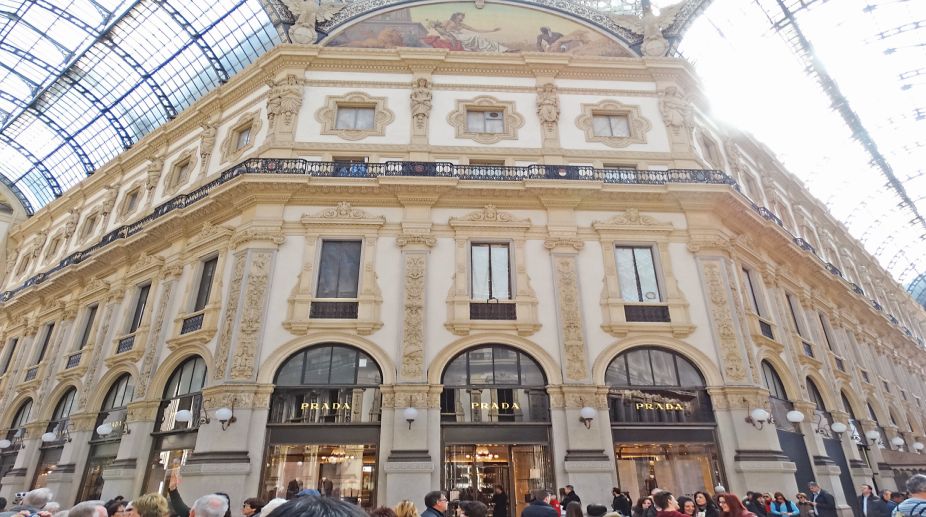A Dream Shattered
“I received a letter just before I left office from a man. I don’t know why he chose to write it, but I’m glad he did. He wrote that you can go to live in France, but you can’t become a Frenchman.

Galleria Vittorio Emanuele II
After the breathtaking experience of Venice, I embarked on the last leg of my Italy visit. It was an incredible 15 days of non-stop travel to some of the ancient cities of the world — the epic architecture and seductive charms of the past brought me to my knees. History couldn’t have been so richly poetic than what one sees in Italy! I was feeling glum and sullen that the clock was ticking away for me to bid goodbye to the enchanting country. But it promised to be a goodbye in style as Milan beckoned as my last stop.

Travelling from Venice via Verona to Milan in the train was a delightful experience. Once you alight from the train you will be looking at the gigantic and supersized roof of the Milano Centrale station — almost as if making a grand welcoming statement to a first-time visitor to the city of style and fashion. King Victor Emmanuel III laid the cornerstone of the station in 1906 without a blueprint, apparently. World War I lead to an economic slump in Italy and the construction work of the station slowed down.
Advertisement
Thereafter, Benito Mussolini, then prime minster of Italy, expedited the work and wanted the station to be grand and represent the power of the Fascist regime. Therefore, you see Milano Centrale handling 120 million passengers annually all the while surpassing the clichéd definition of what a railway station façade should be. Far from being a merely functional transit point, the station is adorned with numerous sculptures in the art deco style. You may mistake it for some grand palace hallway even as you briskly walk with your luggage towards the exit!
Advertisement

You can’t help noticing how Milan is so discordantly different from the rest of Italy in its texture, building and views. Milan looked every bit a grey and flat industrial urban megapolis and just like any other of the ilk, one felt it was badly in need of a scrub. It may sound bit of an unfavourable description but after soaking Italian history and epic architecture, which is littered in every street of its cities, Milan looked un-Italian for once and modernist in so many ways. I was told due to the World War II there is very little left of its history. The city is smart rather than attractive but cosmopolitan and stylish. It is considered to be a leading “Alpha Global City” and is the second most populous city in Italy after Rome, and long held the title of being the fashion capital of the world. Milan is a hub for the arts, commerce, finance and a tourism hotspot boasting important collections in its museums and art galleries.
Milan as a city suffered extensive setbacks from Allied bombing during the World War II. One such structure got badly damaged was the Galleria Vittorio Emanuele II, Italy’s oldest shopping mall designed by architect Giuseppe Mengoni in 1865. This ornate shopping arcade is also known as ilSalotto di Milano (Milan’s drawing room) and makes the city a shopper’s haven. The galleria’s finest feature is its metal and glass roof, crowned with a magnificent central dome.

The roof was the first structure in Italy to use metal and glass in a structural way, rather than just decoratively. The floors are decorated with mosaics of the signs of the zodiac and the floor plan resembles the shape of a Latin cross with an octagonal centre. The arcade is a multibrand fashion wonderland, with the who’s who of luxury haute couture, jewellery, books and paintings. You will find here some of the oldest shops and restaurants in Milan such as Biffi Caffe, founded in 1867 by Paolo Biffi, pastry chef of the monarch.
Adjacent to the Galleria is one of the largest Gothic churches in the world. The Milan Duomo crowned with extraordinary roof, distinctive and bristling spires is one of the architectural gems of this stylish city. Oddly, it took 500 years to complete. Such a magnificent structure also comes with a hefty price tag for the organisation that has been responsible for its construction and maintenance. The marble that was used to build the church was from Candoglia and is not as hard as Carrara marble, which is more commonly used in Italy. It is only a matter of time when wear and tear becomes evidently clear. The replacement of the marble was planned so that much of the Duomo would be refaced.

It is another thing that your appetite for all things Italian may not die down soon. The most coveted visit in Milan was Leonardo Da Vinci’s Last Supper at the convent of Santa Maria delle Grazie, a Unesco World Heritage site. But it eluded me! The ludicrously long advance bookings could run into weeks and months. Disappointed and freaked out at having to miss it, I thought to myself may be it is a good enough excuse for me to visit Italy once again. With a stroke of luck, I would rather start my journey from where I inconclusively ended. Milan, you inspire the world like no other!
Advertisement